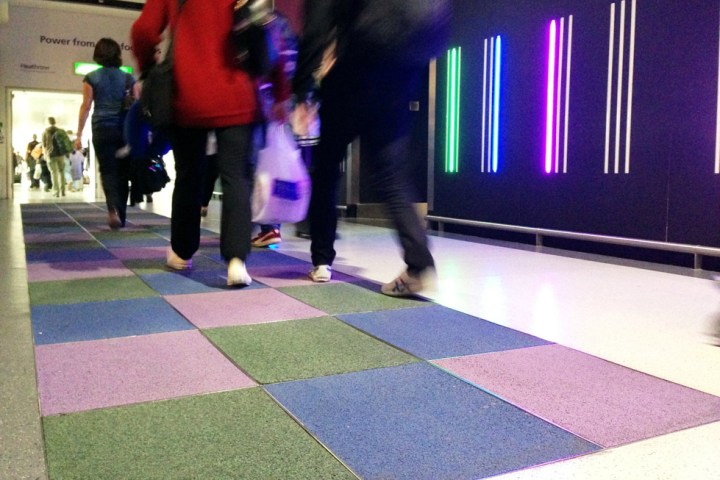
In terms of public awareness, we still haven’t come too far with smart flooring. Google the term, and you’ll see more about making smart choices in buying carpet, laminate, and other materials that you will about flooring choices that keep tabs on you. However, some of these smart flooring technologies are coming to the market, and they’ll have a big impact on individual smart home systems and larger business and government applications.
One company working on smart flooring is Future Shape; this firm’s products, like SensFloor, have been installed in places like nursing homes and other businesses. How does it work? A very thin layer of sensors is installed into the textiles, and radio signals send that data to a central data warehouse. In a nursing home in France, the nurse’s station receives an alert when the smart flooring detected someone had fallen.
In addition to tracking the movements of building inhabitants, some of the newer products claim to be able to generate electricity as well. PowerLeap flooring is the brainchild of Elizabeth Redmond, which applies piezoelectricity to intelligent flooring models. She imagined joggers in Central Park powering safety lighting as they pounded the pavement.
The idea is already in place in some buildings, thanks to Pavegen. You may have stepped on its squares at London’s Heathrow Airport. A couple of AP environmental science students got some installed at their school in Bloomington, Indiana. Each tile has a sensor that detects movement, and at the same time, it produces some amount of energy by changing the magnetic field underneath.
“Every time someone steps on the tile, they generate 7 watts of power,” creator Laurence Kemball-Cook told The Guardian. “The energy is stored within batteries, and then used to power lighting when it’s needed. It’s an off-grid power source for cities.”
While the flooring looks normal enough, it hides two things: lots of circuits and a big price tag. It costs over $1,600 (1,250 pounds) to cover a square meter with Pavegen. Don’t toss out your Fitbit just yet.


